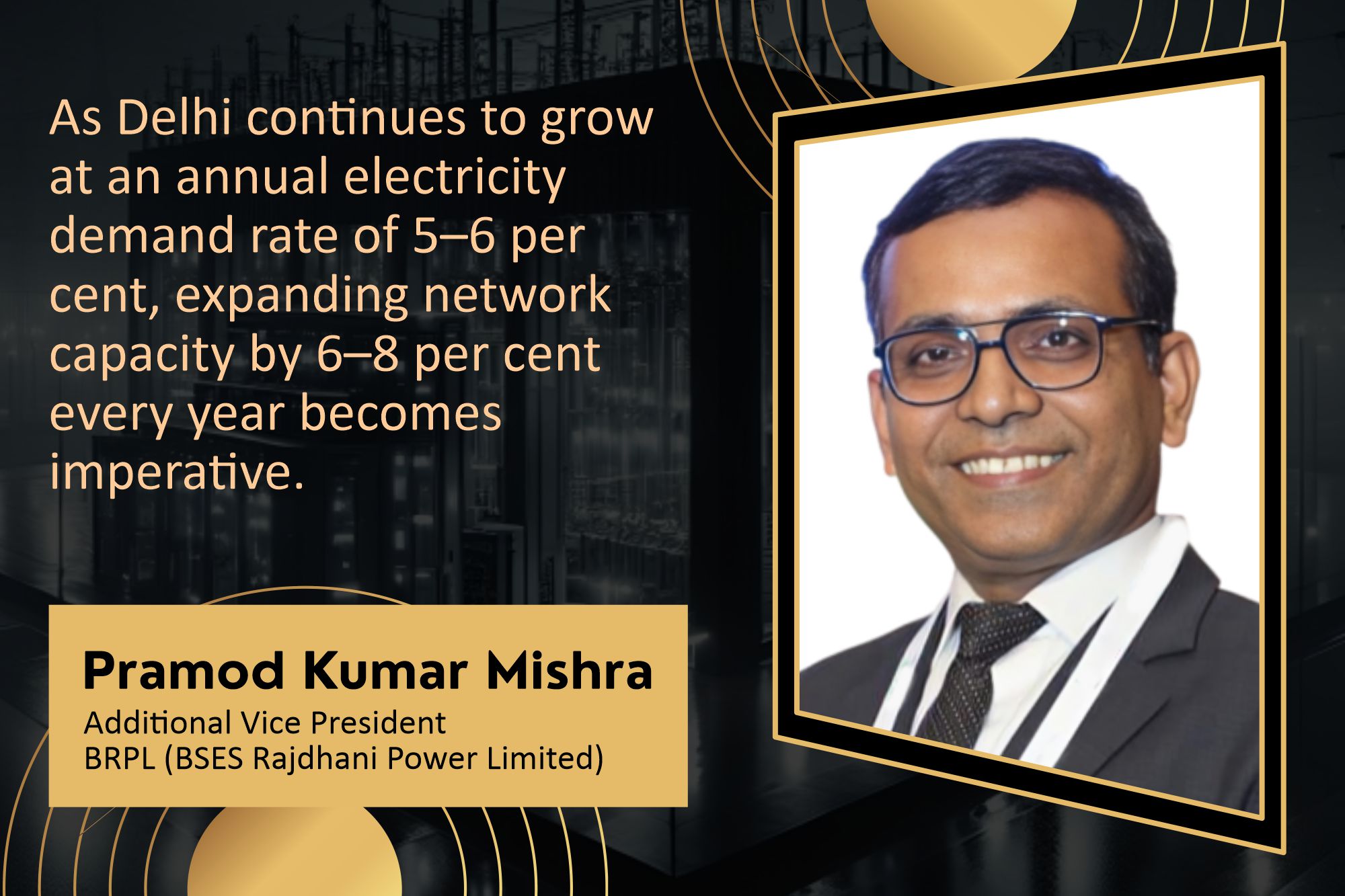BRPL overcoming space and demand challenges to power Delhi
By EPR Magazine Editorial May 6, 2025 11:17 am IST
By EPR Magazine Editorial May 6, 2025 11:17 am IST

BSES Rajdhani Power Limited (BRPL), a key player in Delhi’s electricity distribution landscape, serves a significant portion of the capital city through its two companies—BSES Rajdhani and BSES Yamuna. Together, it caters to nearly two-thirds of the population, covering densely packed zones in South, West, Central, and East Delhi. With approximately five million customers and an astonishing circuit density of over 4,500 customers per square kilometre, BRPL is navigating unique challenges in scaling up its power infrastructure.
As Delhi continues to grow at an annual electricity demand rate of 5–6 per cent, expanding network capacity by 6–8 per cent every year becomes imperative. However, acquiring new land for substations and infrastructure is a persistent hurdle in a city where space is limited and increasingly expensive. Most available land falls under state control, which means every expansion requires inter-agency coordination and approvals, further complicating the process.
BRPL has focused on optimising existing assets and embracing innovative space-saving technologies to tackle these constraints. One major shift has been the conversion of traditional Air-Insulated Substations (AIS) to more compact Gas-Insulated Substations (GIS). This transformation allows BRPL to boost substation capacity without expanding its physical footprint. With recent Central Electricity Authority (CEA) guidelines permitting substation capacities up to 160 MVA at the 66/11 kV level, BRPL has achieved this threshold in select substations, significantly increasing capacity within constrained urban settings.
One GIS substation with a capacity of 63 MVA was commissioned in just 1,140 square meters, whereas regulations generally recommend that it be around 1,500 square meters. Another innovative solution includes packaged or E-house substations—containerised grid systems where switchgear is installed within compact units and power transformers are placed outside. These systems can be set up in as little as 600 square meters.
To further reduce space usage, BRPL has developed elevated and G+1 substations. The elevated substations built on single or double poles place distribution transformers on the top and switchgear below, reducing required space by up to 70–80 percent. The G+1 substations go further, housing two 1 MVA transformers on the upper level and RMUs and air circuit breakers on the ground floor. Remarkably, a G+1 substation requires only 13.7 square meters compared to 79 square meters for traditional layouts, an 85 percent space saving.
BRPL has also experimented with double-decker configurations in substations and low-tension (LT) switchgear systems. For instance, in the LT segment the double-decker air circuit breaker system places one breaker above the other, reducing the equipment footprint without compromising functionality.Cable technology has also evolved. Previously, separate high-density polyethylene (HDPE) ducts and power cables were laid independently, causing inefficiencies and potential quality issues. Now, BRPL has transitioned to co-extruded cables, where the HDPE sheathing is fused with the cable itself. This simplifies installation, reduces costs, and ensures better reliability. Around 500–600 km of such cables are now laid annually.
In addition to physical infrastructure upgrades, BRPL is embracing energy storage technologies to manage the national capital’s unique peak demand curve. The city experiences two distinct peaks—late afternoon and late evening—which only constitute a small portion of the year. BRPL began deploying modular battery storage systems at the distribution transformer level to address these short-duration spikes without excessive capital investment. After successful pilots since 2021, these systems are now being rolled out citywide.
On a larger scale, a 40 MWh grid-connected battery storage system capable of supplying 20 MW for two hours has been installed. This installation alleviates stress not just on the distribution grid but also on the upstream transmission network, providing critical flexibility and reducing the need for costly infrastructure upgrades.
From elevated substations to battery-backed transformers, BRPL’s adaptive and forward-looking approach exemplifies how utilities can ensure a reliable, efficient, and sustainable power supply in dense urban environments. With a focus on modular, compact, and technologically advanced solutions, BSES Rajdhani Power Limited (BRPL) continues to power the capital, meeting the demands of the present while preparing for the future.
We use cookies to personalize your experience. By continuing to visit this website you agree to our Terms & Conditions, Privacy Policy and Cookie Policy.